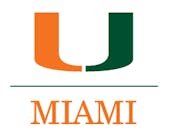At a young age I was fortunate enough to stumble on a copy of Jacques Cousteau’s 1953 book “The Silent World”, which piqued my interest in everything underwater. Shortly thereafter, I saw his movie of the same name. I was hooked. At the earliest possible opportunity I learnt to SCUBA dive, becoming a diving instructor when I left school and basing myself in the southern Egyptian Red Sea for 1992 and 1993. I then returned to England to train as a marine biologist at the University of Southampton (1994 - 1998), before relocating to the Netherlands to complete a M.Sc. and Ph.D. under the supervision of Wolfgang Schlager and Jeroen Kenter, graduating in 2004. Thereafter, I crossed the Atlantic as a post-doc supervised by Bernhard Riegl, with whom I still work closely, before being promoted to faculty with the National Coral Reef Institute – Nova southeastern University in 2006. I joined the University of Miami with the rank of Professor in 2016 where I am pursuing the diverse research interests I have developed over the last 20 years or so, and teaching frequently.
My research areas includes: Remote Sensing, GIS, Comparative Sedimentology Laboratory, Geologic Modelling, Marine Biology, Marine Spatial Planning. Spatial self-organization, the process where coherent spatial patterns emerge through internal interactions, is widely observed in natural systems. Compelling examples range from ripple and dune formation in aquatic and terrestrial systems, to formation of patterned coral reefs and vegetation in arid regions. My research currently focuses on some fundamental questions about the behavior of carbonate depositional environments. In particular, the role that spatial self-organization plays in their patterning and architecture. Beyond better understanding the processes that fashion carbonate stratigraphy, my work also strives to develop realistic facies distribution models in the subsurface based on self-organization relationships. To this end, my science portfolio encompasses themes from satellite and aircraft observation, marine acoustics, GIS, carbonate and petroleum geology, coral reef ecology, software development and mathematical simulation.
Having witnessed the “coral reef crisis” first hand, I also strive to promote big ocean conservation. The scientific consensus is that a third of the ocean must be protected from human pressures, and the bigger the continuous area the better.
Experience
-
–presentProfessor and Chair of the Department of Marine Sciences, University of Miami
- Miami, Florida, U.S.
- Website
- Article Feed
- Joined


